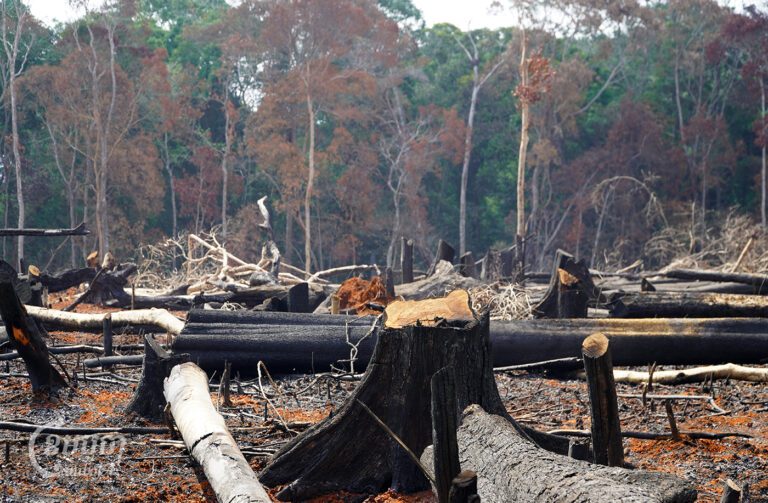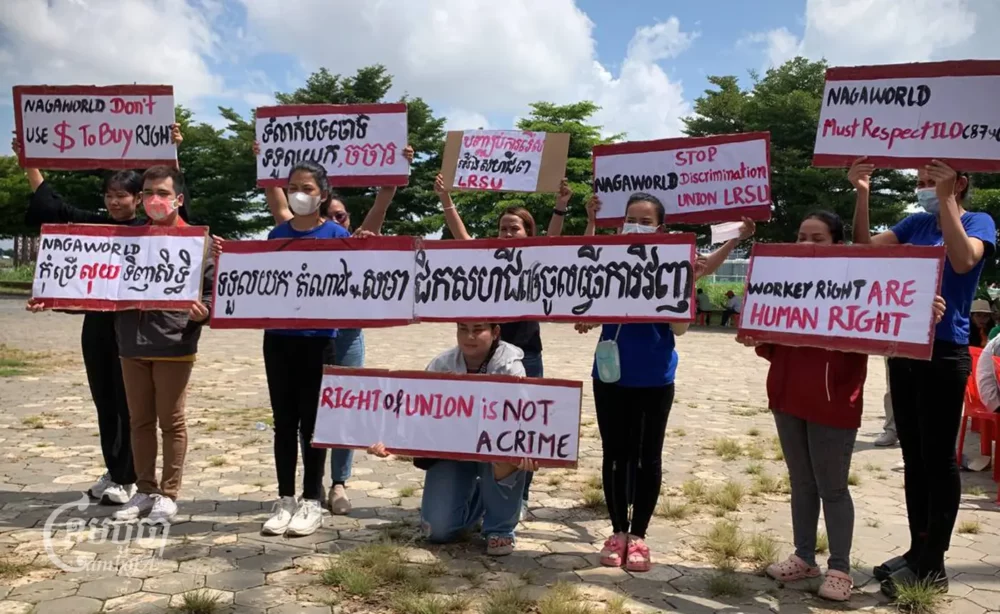New satellite data reveals that Cambodia’s remaining dense forests were further depleted last year, with four major protected areas and national parks registering higher deforestation than in 2021.
The data was released by Global Forest Watch and the University of Maryland’s Global Land Analysis and Discovery (GLAD) Laboratory last week, and shows deforestation was worse in 2022 than 2021 in four protected areas across Cambodia, with other protected areas still showing high rates of tree loss.
Overall, more than 35,000 hectares of forest cover disappeared in 2022, less compared to the past two years which each exceeded 40,000 hectares. The four worst affected protected areas are: Botum Sakor National Park, the Central Cardamom Mountains National Park, Phnom Aural Wildlife Sanctuary, Beng Per Wildlife Sanctuary.
As Cambodia’s largest protected area at just over 430,000 hectares, the Prey Lang Wildlife Sanctuary lost around 8,300 hectares last year, lower than in 2021. But it still registered the highest amount of tree loss in the country for last year.
Srey Thai, a member of the Prey Lang Community Network in Preah Vihear, said that they have received preliminary reports of more than 500 cases of illegal logging since the beginning of 2023. Their patrols have revealed illegal loggers with “koyuns,” a tractor trailer used commonly in Cambodia’s rural areas, loaded with seven meter long freshly cut logs of different luxury timber species.
“There is a significant increase because every month there are new cases reported by the community, which is a matter of concern for our Prey Lang area,” he said. “During each raid, I am worried about my safety and life because they have a lot of guns, but I always fight to protect the forest in Prey Lang for future generations.”
Similarly, the Phnom Samkos Wildlife Sanctuary lost more than 2,000 hectares of forest cover last year, but this was lower than in 2021, when it lost approximately 3,200 hectares.
Keo Seima and Kulen Promtep Wildlife Sanctuaries also saw substantial deforestation during 2022, approximately losing 2,100 and 3,200 hectares of forest cover, respectively. In 2021 the tree losses were higher, with Keo Seima losing more than 3,000 hectares and Kulen Promtep seeing more than 5,500 hectares of forest destroyed.
Environmentalists, indigenous groups and community-led patrols routinely alert the government to the ongoing destruction of Cambodia’s forests, but have instead faced persecution or are prevented from protecting their forests.
“Corruption is the main problem related to illegal logging and loss of forest in the Kingdom,” said Heng Kimhong, director of advocacy and research at the Cambodian Youth Network. “The rangers and local authorities do not have strong commitment to stop illegal logging unless national authorities join with them. And when the national authority come back to Phnom Penh they too don’t have strong commitment to do it.”
Environment Ministry spokesperson Neth Pheaktra did not respond to messages and calls on Telegram on Wednesday. Pheaktra has previously characterized the use of satellite data to advocate against deforestation as “illegal” and warranting legal action.
Mathew Hansen, the researcher behind the GLAD database, said that while lesser deforestation was recorded in 2022, it was likely because there was less of the dwindling resource to exploit.
“The bottom line is if you start running out of that easily accessible forest, your rate [of deforestation] will go down, but it is because you exhausted the resource,” said Hansen. “If you lose control of your forests, and you set a high watermark for deforestation, then a year later it goes down, does it mean you have been successful?”
Botum Sakor National Park

Approximately 2,700 hectares of forest was lost within Koh Kong’s Botum Sakor National Park was cleared in 2022, according to the GLAD data. A majority of this deforestation was on a stretch of land adjacent to the Dara Sakor special economic zone, which is being developed by the Union Development Group (UDG) since 2008. The concession, which accounts for around 36,000 hectares, was sanctioned by the US Treasury in 2020 for human rights violations based on how they evicted communities off of the Dara Sakor land.
In 2021, Mongabay reported how casinos and condos constructed in the concessions were impacting the Botum Sakor park, determining the park had lost 30,000 hectares of forest cover in the last three decades.
The UDG concession specifically lost 10,900 hectares between 2000 and 2021, according to Global Forest Watch, a 29 percent decrease in forest cover. There were spikes in cleared hectares in 2006, 2007, 2009 and 2010, right before and right after the UDG concession was granted.
Beng Per Wildlife Sanctuary

The Beng Per Wildlife Sanctuary in northern Cambodia lost more than 5,500 hectares of forest in 2022, the greatest decrease in forest cover there since 2016. The forest is almost completely destroyed with the reported deforestation in 2022 signaling the potential end to the green area.
A forested area in the eastern part of sanctuary has been almost completely cleared since 2018.
Beng Per is another protected area besieged by concessions. A United Nations general assembly report from 2012 listed seven companies being granted ELCs in 2011 alone for mining, rubber and agricultural industry, all of which negatively impacted the indigenous Kuy people.
Phnom Aural Wildlife Sanctuary

Phnom Aural Wildlife Sanctuary also lost more forest cover in 2022 than any year since 2017, approximately 1,600 hectares. This sanctuary borders both the Southern and Central Cardamom Mountains National Parks and is home to Cambodia’s tallest mountain. Despite this park having the national elevation record holder, it has been historically deforested because it is simply more accessible than the rest of the Cardamom mountain range.
A Global Witness investigation in 2005 found that illegal logging and the trade of timber from Phnom Aural was largely being carried out by different military groups operating in the region. The Phnom Penh Post reported on the conflict between park rangers and loggers supported by the military, primarily Military Region 3. Multiple other military organizations were implicated in the trade of illegally logged timber, but Global Witness also chiefly accuses this unit for setting up sawmills and actually cutting down trees.
Central Cardamom Mountains National Park

Deforestation in the Central Cardamom Mountains National Park increased during 2022, losing 834.5 hectares in 2022. A Mongabay investigation published in late May linked illegal logging activities to the government approved construction of the Stung Tatai Leu hydropower dam near the community of Thma Bang.
(Additional Reporting by Runn Sreydeth)














